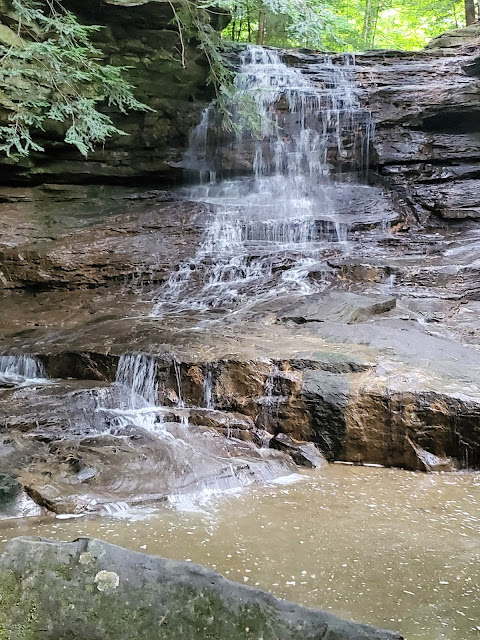10 Tips for Hiking (Successfully) with Kids
Hiking has always been one of my favorite family activities. It is the perfect blend of low cost, no electronic devices, and opportunities to connect both with each other and nature. I could go on for hours about the benefits and rewards of hiking for both adults and kids--from stress relief, science, and nature learning, risk-taking and physical exercise--the list goes on for pages! If you are ready to share your love of hiking and the outdoors with children in your life, there are some ways to make sure that hiking is safe, fun, and rewarding for everyone involved. Here are ten tips for hiking with kids.
Start small. Choose a short and easy hike for the first excursion. A short hike on level or even paved trails gives you the opportunity to gauge your child's attention span and physical endurance or physical interest--and their ability to follow directions and stay near you. Small, short hikes are also useful at the start of a new season to test our shoes, clothing, and the child's tolerance to temperature or weather changes!
Pack snacks and water. Keep everyone energized and hydrated throughout the journey. This will mean packing up some portable snacks like granola bars, nuts, or fruit that are easy to carry. Ensure that everyone has his own water bottle. After the first few hikes, I also recommend that each child carry his own little backpack with his snacks and drinks to give him some responsibility and take some of the load off the grownups.
Bring a first aid kit. For short, easy hikes, this doesn't have to be a huge first aid kit--just something with a few bandages and wipes in case of any cuts, scrapes, or insect bites. Later on, you may need to pack more than a mini first aid kit as your hikes and risks change.
Wear appropriate clothing. Opt for light layers and comfortable shoes. If there is mud--kids will find it and, generally, slide, slip or fall in it. Pack the car with a few towels and an extra outfit, including socks and shoes, along with a bag to transport wet, muddy clothes and shoes home.
Talk about safety--and practice what you preach. Staying on designated trails is often required in parks and hiking areas--but is certainly recommended when hiking unknown areas or areas with cliffs or dangerous drops. Kids are natural climbers, runners, jumpers, and explorers--so be sure to set the rules for staying on trails, not throwing rocks or swinging sticks randomly, staying with adults, and walking rather than running at certain times! It's also important that you set a good example by hiking safely and being considerate of other hikers and nature as well.
Go at a kid's pace and make it fun. Don't try to rush them, and take breaks when needed. My youngest daughter always found the best things on trails because she took the time to look at everything! She still does because she is a natural explorer--and hikes in the moment rather than toward a destination! Allow a lot more time than you generally need for a hike when you take the kids, and engage your children with sights, stories, games, and activities along the way.
Bring a paper map. My kids always loved printed trail maps--especially during their Dora the Explorer phases! A paper map can help orient the kids and make them feel like explorers--and it helps them practice using directions and some of the map reading skills that they are likely learning in school!
Use bug spray. No one wants to be eaten alive by biting insects during a hike! I can tell you an itchy, mosquito-bitten kiddo is no fun during a 2-mile hike. Whether using a traditional, old-school repellent or a DEET-free, eco-friendly one--it's worth remembering the repellent!
Engage all senses. Take the time to point out the different sights, smells, and sounds children can experience. Hiking gives the perfect opportunity to practice skills like colors and counting with little ones or work on more advanced skills like tree and plant identification with older children. Pick up a cheap pair of rugged, kid-friendly binoculars to give the little ones a new focus and perspective.
Take photos. Capture the moments during your hike and share the memories with your kids afterward. While you will want to capture the beauty of nature and the trail's highlights--you also want to capture candid shots of the kids, pictures of dirty hands and feet, and even the occasional tired, sweaty, grumpy face! I always like to create a "selfie scavenger hunt" that "forces" the kiddos and grownups to take selfie photos with scavenger hunt finds. A simple list of 10 items to find slows down the pace, gets everyone engaged, and ensures that you take time to take photos along the way!
Do you have some tried-and-true tips to share for hiking successfully with kids? Leave us a comment!
















0 comments